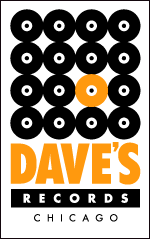
No bones about it, we are on the cusp of a tumultuous time in a world already fraught with troubles, stress, and strife. But understanding that the path forward will be a struggle, let’s recognize that no fight is won and no trial endured without moments of respite. Refortification of the spirit through pleasure and joy is essential; for regular readers of this site, music is a major source of both. And so, please bookmark this week’s Best of the Year lists to revisit later when an emotional recharge is needed. As is our norm, we start with the box sets and expanded releases.
 10. Creation Rebel – High Above Harlesden 1978–2023 (On-U Sound) 2024 was another solid year for the On-U Sound reissue program, starting out strong in March with the release of this 6CD box set collecting the six albums this estimable and persevering UK-based dub unit recorded in the titular quarter century. Those half dozen LPs were given concurrent standalone LP pressings, so vinyl hardliners take note. Maybe the biggest compliment that can be bestowed on this set (and by extension, the group and Adrian Sherwood) is that Creation Rebel’s most recent album Hostile Environment isn’t the weakest of the six.
10. Creation Rebel – High Above Harlesden 1978–2023 (On-U Sound) 2024 was another solid year for the On-U Sound reissue program, starting out strong in March with the release of this 6CD box set collecting the six albums this estimable and persevering UK-based dub unit recorded in the titular quarter century. Those half dozen LPs were given concurrent standalone LP pressings, so vinyl hardliners take note. Maybe the biggest compliment that can be bestowed on this set (and by extension, the group and Adrian Sherwood) is that Creation Rebel’s most recent album Hostile Environment isn’t the weakest of the six.
 9. Tsunami – Loud Is As (Numero Group) Having decided to devote a portion of their energies to assorted bands from the late-1980s-’90s rock underground, Numero Group’s resulting reissue program has been commendable, and nowhere better than this 5LP set. Tsunami’s frontwomen Jenny Toomey and Kristin Thomson co-founded Simple Machines, which quickly became one point on a thriving DMV label triangle with Dischord and Teen-Beat. The band’s guitar-based sound was pleasingly tough and raw and yet a needed antidote to rampant u-ground rock scene testosterone. Best of all, Tsunami’s music, which has become difficult to find in physical form, still sounds fucking great.
9. Tsunami – Loud Is As (Numero Group) Having decided to devote a portion of their energies to assorted bands from the late-1980s-’90s rock underground, Numero Group’s resulting reissue program has been commendable, and nowhere better than this 5LP set. Tsunami’s frontwomen Jenny Toomey and Kristin Thomson co-founded Simple Machines, which quickly became one point on a thriving DMV label triangle with Dischord and Teen-Beat. The band’s guitar-based sound was pleasingly tough and raw and yet a needed antidote to rampant u-ground rock scene testosterone. Best of all, Tsunami’s music, which has become difficult to find in physical form, still sounds fucking great.
 8. Soft Machine – Høvikodden 1971 (Cuneiform) Last year it was The Dutch Lesson, which took the seventh spot in this site’s Best Box Sets of 2023. Slipping one spot isn’t indicative of anything; Høvikodden 1971 is likely stronger than The Dutch Lesson, but I’ll confess that I haven’t thought of them comparatively that much, in large part because Mike Ratledge is the only commonality between the two bands. This set offers the “classic” lineup captured in two performances held in an art museum with projections rather than in a rock club. They sound inspired, and indeed progressively (see what I did there?) more inspired on disc two, as they got comfortable and really started dishing out the expansive grooves.
8. Soft Machine – Høvikodden 1971 (Cuneiform) Last year it was The Dutch Lesson, which took the seventh spot in this site’s Best Box Sets of 2023. Slipping one spot isn’t indicative of anything; Høvikodden 1971 is likely stronger than The Dutch Lesson, but I’ll confess that I haven’t thought of them comparatively that much, in large part because Mike Ratledge is the only commonality between the two bands. This set offers the “classic” lineup captured in two performances held in an art museum with projections rather than in a rock club. They sound inspired, and indeed progressively (see what I did there?) more inspired on disc two, as they got comfortable and really started dishing out the expansive grooves.
 7. The Saints – (I’m) Stranded (In the Red / Universal Music Australia) With this 4LP set, the case can legitimately be made for The Saints as the greatest Aussie punk band of the original wave. There are other contenders, but we’re not going to list them, as this remarkable collection is wholly deserving of the entire spotlight. It holds the band’s classic debut remastered for vinyl, the previously unreleased alternate mix from 1976, the “This Perfect Day” 12-inch and the “1-2-3-4” double 7-inch, and two live sets, one short (five songs) and one album length. The title track has been anthologized countless times and will likely remain the band’s signature tune, but this set is positively stuffed with goodness.
7. The Saints – (I’m) Stranded (In the Red / Universal Music Australia) With this 4LP set, the case can legitimately be made for The Saints as the greatest Aussie punk band of the original wave. There are other contenders, but we’re not going to list them, as this remarkable collection is wholly deserving of the entire spotlight. It holds the band’s classic debut remastered for vinyl, the previously unreleased alternate mix from 1976, the “This Perfect Day” 12-inch and the “1-2-3-4” double 7-inch, and two live sets, one short (five songs) and one album length. The title track has been anthologized countless times and will likely remain the band’s signature tune, but this set is positively stuffed with goodness.


 Professor Longhair’s 1970s renaissance is one of the sweeter late acts in the whole of 20th century American music; throughout the decade Henry Roeland Byrd was knocking out crowds on festival stages across the USA and Europe, but before the Alligator label’s 1980 release of Crawfish Fiesta the pianist was still primarily known on home stereos for his ‘50s work as collected by Atlantic on their classic ’72 LP New Orleans Piano.
Professor Longhair’s 1970s renaissance is one of the sweeter late acts in the whole of 20th century American music; throughout the decade Henry Roeland Byrd was knocking out crowds on festival stages across the USA and Europe, but before the Alligator label’s 1980 release of Crawfish Fiesta the pianist was still primarily known on home stereos for his ‘50s work as collected by Atlantic on their classic ’72 LP New Orleans Piano.
 A pop icon, but also a pop idol in his youth, Frank Sinatra had the kids screaming. And one barometer of 20th century pop icon/idol status is that those on the list didn’t just cut records, they made movies. Bing Crosby, Frank, Elvis Presley, The Beatles (notably, the only band in the bunch), and Michael Jackson: they all interacted to varying extents with the film industry, as the careers of all but Jackson hit their high points in the pre-music video era (and Jackson was arguably the defining artist across the short heyday of music video).
A pop icon, but also a pop idol in his youth, Frank Sinatra had the kids screaming. And one barometer of 20th century pop icon/idol status is that those on the list didn’t just cut records, they made movies. Bing Crosby, Frank, Elvis Presley, The Beatles (notably, the only band in the bunch), and Michael Jackson: they all interacted to varying extents with the film industry, as the careers of all but Jackson hit their high points in the pre-music video era (and Jackson was arguably the defining artist across the short heyday of music video).



 There’s been a lot of debate over the years regarding the value of the late-‘70s musical surge known as New Wave. Setting aside the zealous haters that simply could not abide the movement’s departures from the Zeppelin/Eagles Arena Rock model, many detractors continue to associate the term with a weakening of the punk aesthetic set in motion by acts looking for wider success as encouraged by the interests of parties that were largely if not completely mercantile in character.
There’s been a lot of debate over the years regarding the value of the late-‘70s musical surge known as New Wave. Setting aside the zealous haters that simply could not abide the movement’s departures from the Zeppelin/Eagles Arena Rock model, many detractors continue to associate the term with a weakening of the punk aesthetic set in motion by acts looking for wider success as encouraged by the interests of parties that were largely if not completely mercantile in character.
 Townes Van Zandt was one of the true bittersweet troubadours of American Music. The woeful obscurity that afflicted him during a life too short and rife with trouble (dead of a heart attack shy of his 53rd birthday in 1997 after many years of drug and alcohol addiction) is hard to reconcile with the nude beauty of his music.
Townes Van Zandt was one of the true bittersweet troubadours of American Music. The woeful obscurity that afflicted him during a life too short and rife with trouble (dead of a heart attack shy of his 53rd birthday in 1997 after many years of drug and alcohol addiction) is hard to reconcile with the nude beauty of his music.

















































